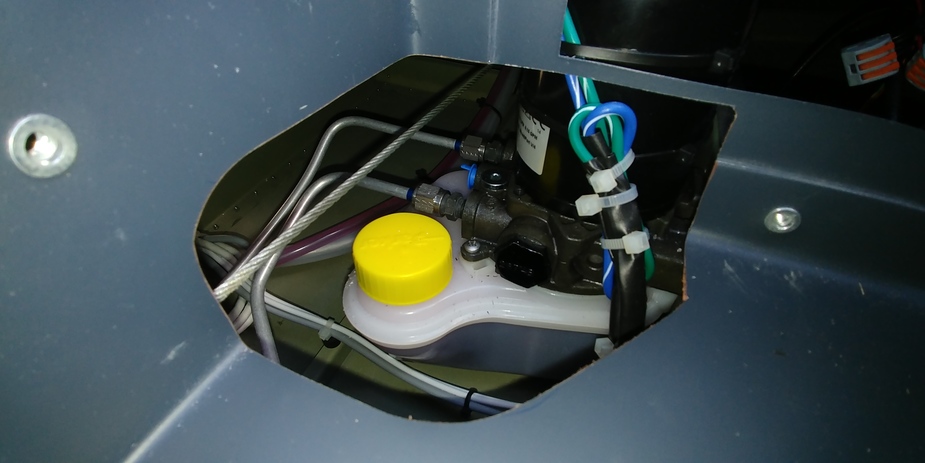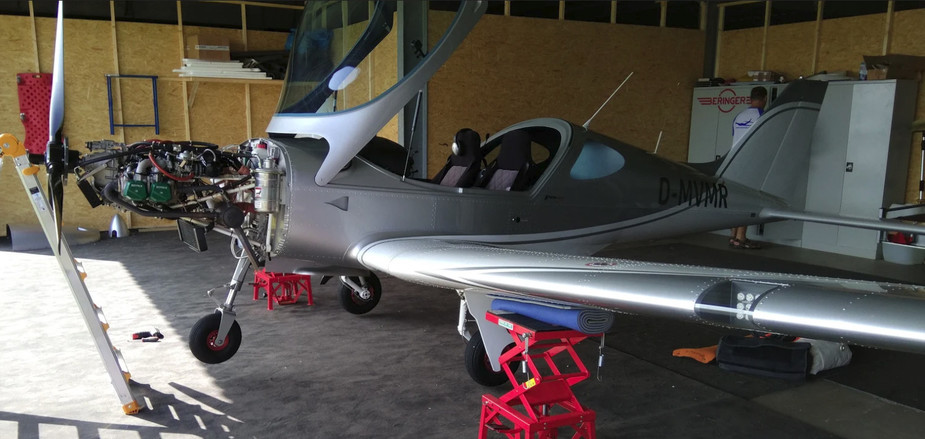Question mainly to Peter: After hearing a strange high-pitched sound in my TB20 inflight yesterday, I am diving into the hydraulics, suspecting something around the UG as culprit. Will check gear fluid level tomorrow (no spare time after landing), weather should be good…
And also a short test flight.
Since I only noticed it after retracting the gear, and believe it was gone in landing configuration, I am reading up here.
When I watched the last video, I noticed the very same sound. Not the hydraulic pumping itself, but the high frequency sound that is still audible after the gear is completely retracted until the video stops.
So what makes this noise?
PS: all systems and instruments appeared to be working in good order…
Peter wrote:
I wonder how Lancair buy this pump when Parker ostensibly refuse to sell it into the aviation market?
Lancair doesn’t necessarily sell it. They could simply just specify that “others” have used such a pump.
When I watched the last video, I noticed the very same sound. Not the hydraulic pumping itself, but the high frequency sound that is still audible after the gear is completely retracted until the video stops.
That is the Gear UP warning horn. It comes on when
(the gear is NOT down and locked) AND ((the flaps are in position 2) OR (the throttle lever is within about 2cm of the bottom of its travel))
In the video the flaps are fully up but the throttle was closed, as it normally is when parked etc.
If you get that sound in flight, it won’t be the gear pump or anything related. I would check the throttle microswitch, or the rest of the warning logic e.g. the wire from the flap position.
Lancair doesn’t necessarily sell it. They could simply just specify that “others” have used such a pump.
Didn’t Lancair sell kits? I think my comment was based on the 320 which was discontinued a long time ago. I vaguely recall finding the same pump P/N on some 320 project website.
It’s easy for an OEM to buy this pump. It’s what Socata do, and probably most others. In GA, very few parts specifiers do much “looking around” which is one reason the same substandard parts pop up all over the place. The OEM would buy it with a CofC and generate EASA-1 paperwork under their 145 authority. Lancair wouldn’t even need the CofC…
Thanks Peter,
OK, that’s not it. When I gradually reduced throttle for the decent, I get the warning at/below about 17" MAP. Sounded different.
What I hear thru the headset is more like a moskito close to my ear… ;-)
Search will continue.
Check Flight result:
High pitch sound starts after retracting the gear.
Stops when lowering gear. And resumes gear up.
Stops when pulling the breaker. And resumes with breaker in.
So it appears to be the pump permanently running when gear is up.
If I understand the hydraulic system correctly, that could mean
either a faulty pressure switch, not interrupting the power supply to the electric pump (although the system pressure is high enough)
or an ineffective pump that does not reach the necessary pressure in the system for the switch to kick in (1400psi?).
The latter would suprise me, since the gear appears to be operating properly, both up and down (when comparing it to the various videos here – on jacks aswe ll as in flight)
Incidentally, the hydraulic fluid level is
-above the half inch cut-out mark on the dip stick when screwed out
-at the low end of the cut-out mark when just pushed in until the start of the threading (but not screweed in)
That enough ? And could too low a level make the pump work permanenetly, while working the gear properly ?
Am I missing something (or just enroute to an extra expense  ) ?
) ?
If the pump is running all the time, it will get damaged pretty quick. You need to get the plane into a hangar and on jacks ASAP. One should never do work on retractable gear unless on jacks, because if e.g. you have a circuit fault which disables the squat switches, you will get a gear retraction. It has been done and it costs a fortune. The fluid takes the path of least resistance so the nosewheel retracts first and crunches the prop and you need a shock load inspection too even though the prop wasn’t running, due to stresses on crank, crankcases, etc.
Update – sometimes (read: rarely, but it happens) problems are not as big as expected/feared.
In my case, it was not the pressure switch or pump, and neither the hydraulic liquid level or a leak.
Apparently, the emergency release valve beneath the panel can develop a leak…
And then you have an internal leak which the pump works against.
That’s what has happened in my case. The emergency valve was not in the release position (for which you have to press a central button first, before pulling it), but at the same time not in the full forward position.
Once fully released and pushed back in again, the system worked perfectly again.
And yes, it all happened on jacks ;-)
Will watch it for some time, of course. But should be all fine again.
How it happened ? No idea – I tend to say “wasn’t me”, but who else ?
Oh yes  Thanks for posting the update.
Thanks for posting the update.
Search here for “Emergency Gear Release Valve”. That valve is easily damaged, either by being partially open (in which case the pressure from the pump can rip the seals) or by being “maintained” by a company which doesn’t know how to do it.
The cable also needs to be adjusted so that it is “stressed” (compressed, and thus buckling slightly) when the red knob is fully pushed in. That ensures the valve is closed and remains closed. Same on the alternate air door under the fuel servo; if that is partially open, even 3mm, you get a big rise in the wear in the soft metals in the engine. I had that…
Peter wrote:
Didn’t Lancair sell kits?
The word “kit” is not a very well defined term in the experimental business. “Auxiliary” items such as engine and everything related to the engine, instruments and electric stuff, etc etc is usually not part of the “kit”. A kit is usually just the bare air frame. The reason is that everybody wants their own kind of engine, their own kind of instruments and so on. I don’t know if Lancair delivered those pumps as part of the kit, but I would be more surprised if they did than if they didn’t. Maybe they sold it as a separate kit, or someone else did. For the Sonex line of aircraft, no hardware is included in the kit. Rather ACS sell “hardware kits”, not only for Sonex, but for a whole bunch of others also. That “kit” is basically a long list of different nuts and bolts and other stuff.
The Carbon Cub is different. There every single thing is included, for better or for worse. The Carbon Cub cannot run on other fuel than 100LL for instance. Then there are the “build in 2 weeks” Glasairs and of course the Evolution. But they are not kits at all, they are factory built experimental aircraft with (token) owner participation.
So, a “kit” can be anything from a stack of raw materials and some sketches, to token sanding of a rudder on a factory built aircraft.
Hi Peter,
This is a little off topic since it does not specifically concern the TBM, but it might be helpful to everyone dealing with a Parker 108 unit. I own a 2016 Bristell RG “ultralight” and am currently making myself familiar with the whole RG system, obviously based on a Parker 108 unit as well, after recently during several flights my nosewheel and occasionally the main wheels dropped out partially during flight.
The Bristell ist out of warranty and last year I went to my German dealer and we tried to “flush” the whole system by activating the RG on the ground (of course properly elevated of the wings) several times. This really seemed to help as after that the gear stayed under pressure, but now again after the winter break I have the same problem again.
My dealer suggested to open the large hexagonal bolt and check inside for corrosion, there should be a metal ball inside which I can remove with a magnet. Before I do this, I have not seen this procedure in the manual so I would be thankful for any suggestion where the problem might be. I still must find a way to read the sticker on the other side to get the exact model/specs of the unit.
I realised that there are 2 large bolts, is that correct and can I open them safely without having to “bleed” the system (I am still unfamiliar hydraulic systems and the manufacturer is rather slow on answering and I apologize for the question – I am a curious “learning by doing” guy but better ask twice than messing around with the RG)


Thanks for any help,
Michael from Germany